Windows Activity Debugger
Posted: April 1, 2012
Threat Metric
The following fields listed on the Threat Meter containing a specific value, are explained in detail below:
Threat Level: The threat level scale goes from 1 to 10 where 10 is the highest level of severity and 1 is the lowest level of severity. Each specific level is relative to the threat's consistent assessed behaviors collected from SpyHunter's risk assessment model.
Detection Count: The collective number of confirmed and suspected cases of a particular malware threat. The detection count is calculated from infected PCs retrieved from diagnostic and scan log reports generated by SpyHunter.
Volume Count: Similar to the detection count, the Volume Count is specifically based on the number of confirmed and suspected threats infecting systems on a daily basis. High volume counts usually represent a popular threat but may or may not have infected a large number of systems. High detection count threats could lay dormant and have a low volume count. Criteria for Volume Count is relative to a daily detection count.
Trend Path: The Trend Path, utilizing an up arrow, down arrow or equal symbol, represents the level of recent movement of a particular threat. Up arrows represent an increase, down arrows represent a decline and the equal symbol represent no change to a threat's recent movement.
% Impact (Last 7 Days): This demonstrates a 7-day period change in the frequency of a malware threat infecting PCs. The percentage impact correlates directly to the current Trend Path to determine a rise or decline in the percentage.
| Threat Level: | 2/10 |
|---|---|
| Infected PCs: | 11 |
| First Seen: | April 1, 2012 |
|---|---|
| OS(es) Affected: | Windows |
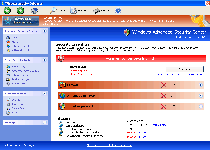 Windows Activity Debugger is a new entry into the Win32/FakeVimes category of fake anti-virus programs, and like other members of that group, Windows Activity Debugger is able to create inaccurate pop-up alerts, block genuine security programs, alter various security-related settings on your PC and hijack your web browser to control its ability to load websites. All of these issues make a Windows Activity Debugger a liability to any computer that should be removed as quickly as possible, although Windows Activity Debugger will try to evade normal removal methods (such as via the Control Panel) and, ideally, should be annihilated by a proper anti-malware program that can also remove Windows Activity Debugger's various system changes. While Windows Activity Debugger will use its attacks as noted above to trick you into wasting money on a registration key as a solution for these problems, Windows Activity Debugger isn't a legitimate anti-virus product and should never be purchased (although using a freely distributed activation key can be used to make deleting Windows Activity Debugger a little simpler than usual).
Windows Activity Debugger is a new entry into the Win32/FakeVimes category of fake anti-virus programs, and like other members of that group, Windows Activity Debugger is able to create inaccurate pop-up alerts, block genuine security programs, alter various security-related settings on your PC and hijack your web browser to control its ability to load websites. All of these issues make a Windows Activity Debugger a liability to any computer that should be removed as quickly as possible, although Windows Activity Debugger will try to evade normal removal methods (such as via the Control Panel) and, ideally, should be annihilated by a proper anti-malware program that can also remove Windows Activity Debugger's various system changes. While Windows Activity Debugger will use its attacks as noted above to trick you into wasting money on a registration key as a solution for these problems, Windows Activity Debugger isn't a legitimate anti-virus product and should never be purchased (although using a freely distributed activation key can be used to make deleting Windows Activity Debugger a little simpler than usual).
Windows Activity Debugger – a Pest That Has Zero Problems with Bugging Windows
Windows Activity Debugger tries to pass itself off as a completely brand-new anti-virus program with other security functions, including phishing protection, a memory monitor and similar types of generically useful features. While this cornucopia of security capabilities sounds like a streamlined solution to PC security problems, Windows Activity Debugger can easily afford to offer them since Windows Activity Debugger doesn't make any effort to follow through on the appearance of having such features. System scans and pop-ups from Windows Activity Debugger will always contain inaccurate system information and Windows Activity Debugger isn't able to provide any kind of protection against the PC threats that Windows Activity Debugger claims to detect and remove.
Since Windows Activity Debugger is a member of FakeVimes, SpywareRemove.com malware analysts note that you distinguish between real warning messages from your PC and Windows Activity Debugger's fake ones by watching for erroneous alerts like the examples shown here:
Error
Software without a digital signature detected.
Your system files are at risk. We strongly advise you to activate your protection.
Error
Attempt to run a potentially dangerous script detected.
Full system is highly recommended.
Warning! Virus Detected
Threat detected: FTP Server
Infected file: C:\Windows\System32\dllcache\wmpshell.dll
Warning! Identity theft attempt detected
Hidden connection IP: 128.154.26.11
Target: Microsoft Corporation keys
Similar types of scamware include Privacy Guard Pro, Extra Antivirus, Fast Antivirus 2009, Presto TuneUp, Windows Security Suite, Smart Virus Eliminator, Packed.Generic.245, Volcano Security Suite, Windows Enterprise Suite, Enterprise Suite, Additional Guard, Live PC Care, PC Live Guard, Live Enterprise Suite, Security Antivirus, My Security Wall, CleanUp Antivirus, Smart Security and PrivacyGuard Pro 2.0. Like Windows Activity Debugger, these rogue anti-virus applications will use their fake security features to encourage you to buy their registration key, which SpywareRemove.com malware researchers discourage as a needless violation of your financial information and a general waste of money.
Exterminating Windows Activity Debugger with Your PC No Worse Off for the Wear
Windows Activity Debugger is also able to disable many types of security programs and processes, and may also attempt to control your web browser so that it's forced to load malicious sites or block PC security sites. These attacks in conjunction with Windows Activity Debugger's refusal to be uninstalled by standard methods make stopping Windows Activity Debugger from launching itself a necessity before you can remove Windows Activity Debugger with suitable software. SpywareRemove.com malware research team recommends a Safe Mode-based system boot as an initial solution to deactivate Windows Activity Debugger, although you can also attempt to imitate a registration using the code '0W000-000B0-00T00-E0020.'
Since Windows Activity Debugger is, at the time of this writing, still a new addition to the Win32/FakeVimes family, SpywareRemove.com malware experts also encourage you to make sure that your security software has been updated before you try to remove Windows Activity Debugger. Out-of-date anti-malware programs may be unable to detect Windows Activity Debugger even if other precautions are taken. Windows Activity Debugger is (as its name implies) a PC threat that only attacks Windows, and non-Windows operating systems can be rated as safe from typical Windows Activity Debugger attacks.
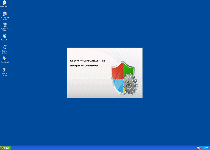
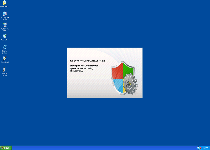
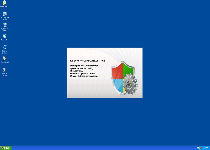
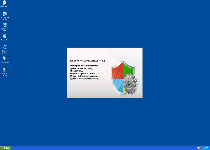
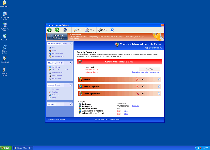
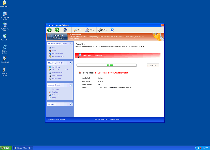
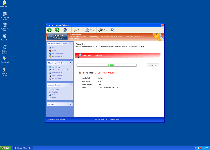
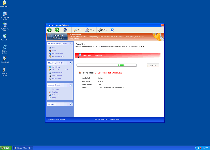
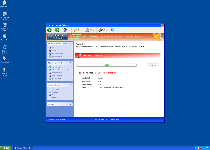
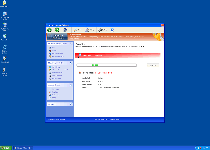
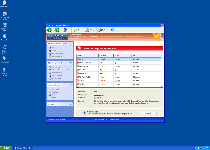
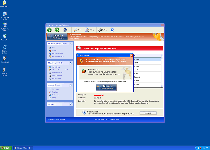
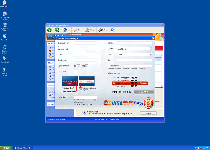
Use SpyHunter to Detect and Remove PC Threats
If you are concerned that malware or PC threats similar to Windows Activity Debugger may have infected your computer, we recommend you start an in-depth system scan with SpyHunter. SpyHunter is an advanced malware protection and remediation application that offers subscribers a comprehensive method for protecting PCs from malware, in addition to providing one-on-one technical support service.
* See Free Trial offer below. EULA and Privacy/Cookie Policy.
Why can't I open any program including SpyHunter? You may have a malware file running in memory that kills any programs that you try to launch on your PC. Tip: Download SpyHunter from a clean computer, copy it to a USB thumb drive, DVD or CD, then install it on the infected PC and run SpyHunter's malware scanner.
Technical Details
File System Modifications
Tutorials: If you wish to learn how to remove malware components manually, you can read the tutorials on how to find malware, kill unwanted processes, remove malicious DLLs and delete other harmful files. Always be sure to back up your PC before making any changes.
The following files were created in the system:%AppData%\NPSWF32.dll
File name: %AppData%\NPSWF32.dllFile type: Dynamic link library
Mime Type: unknown/dll
Group: Malware file
%AppData%\Protector-[RANDOM 3 CHARACTERS].exe
File name: %AppData%\Protector-[RANDOM 3 CHARACTERS].exeFile type: Executable File
Mime Type: unknown/exe
Group: Malware file
%AppData%\result.db
File name: %AppData%\result.dbMime Type: unknown/db
Group: Malware file
%Desktop%\Windows Activity Debugger.lnk
File name: %Desktop%\Windows Activity Debugger.lnkFile type: Shortcut
Mime Type: unknown/lnk
Group: Malware file
%StartMenu%\Programs\Windows Activity Debugger.lnk
File name: %StartMenu%\Programs\Windows Activity Debugger.lnkFile type: Shortcut
Mime Type: unknown/lnk
Group: Malware file
Registry Modifications
HKEY..\..\{Value}HKEY_CURRENT_USER\Software\Microsoft\Windows\CurrentVersion\Internet Settings "WarnOnHTTPSToHTTPRedirect" = 0HKEY_CURRENT_USER\Software\Microsoft\Windows\CurrentVersion\Policies\System "DisableRegedit" = 0HKEY_CURRENT_USER\Software\Microsoft\Windows\CurrentVersion\Policies\System "DisableRegistryTools" = 0HKEY_CURRENT_USER\Software\Microsoft\Windows\CurrentVersion\Policies\System "DisableTaskMgr" = 0HKEY..\..\..\..{Subkeys}HKEY_CURRENT_USER\Software\Microsoft\Windows\CurrentVersion\Settings "ID" = 4HKEY_CURRENT_USER\Software\Microsoft\Windows\CurrentVersion\Settings "net" = 2012-2-20_1HKEY_LOCAL_MACHINE\SOFTWARE\Microsoft\Windows NT\CurrentVersion\Image File Execution Options\[RANDOM].exeHKEY_LOCAL_MACHINE\SOFTWARE\Microsoft\..{RunKeys}HKEY_CURRENT_USER\Software\Microsoft\Windows\CurrentVersion\Run "Inspector"
Leave a Reply
Please note that we are not able to assist with billing and support issues regarding SpyHunter or other products. If you're having issues with SpyHunter, please get in touch with SpyHunter customer support through your SpyHunter . If you have SpyHunter billing questions, we recommend you check the Billing FAQ. For general suggestions or feedback, contact us.